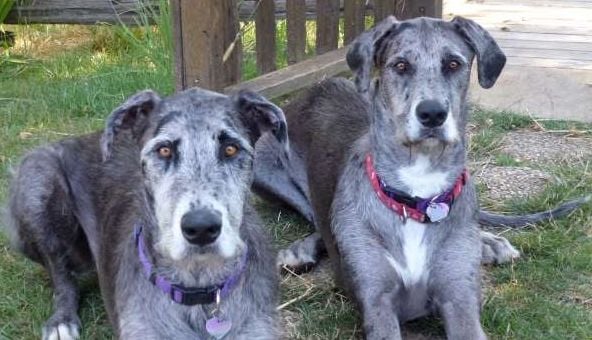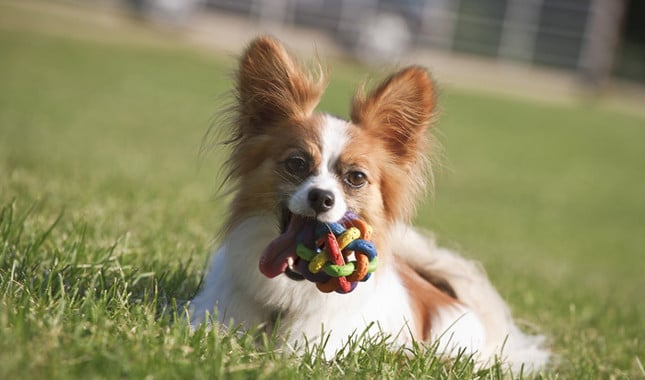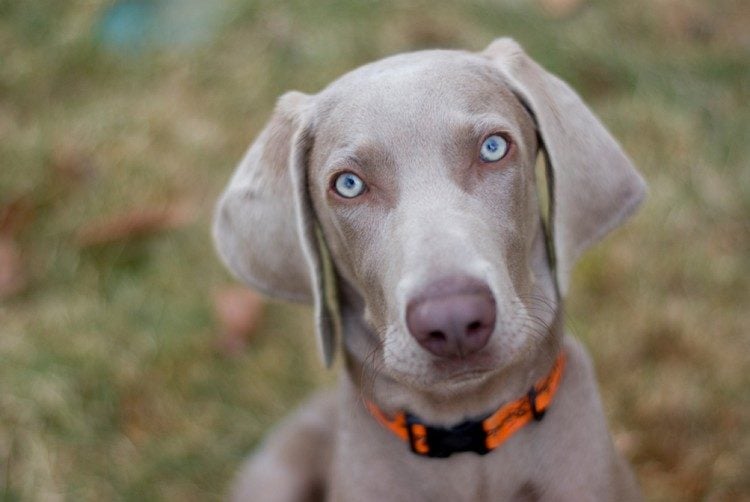The Best and Worst Dog Breeds for College Students

Your choice of the best and the worst dog breeds can make you the best or the worst student in the class. Like people, you need to find the type of dog that is compatible with your personality and college lifestyle.
If you are thinking of getting a dog to move into your off-campus housing situation, make sure there are no limitations on the size of the dog established by the lease when you sign it.
Whatever type of dog you choose to get, remember that it was never created to sit inside all day, though there are breeds that mar more comfortable being by your side than running around in search of friendlies.
First Type
The first basic type of college lifestyle is the out and about, I need my freedom, style. This lifestyle gives you a far greater selection of dogs breed to choose from because most dogs like being out and about.
Your major limitation will be your food budget, so if it is tight then you will have to avoid breeds like the Great Dane or Saint Bernard, whose weight can easily exceed 200 pounds. Be sure to select a breed that likes activity as opposed to needs activity. Your schedule and class demands can change, restricting your active lifestyle and with it, restricting your dog’s outdoor time.
Second Type
The second basic type of college lifestyle is the limited social, high study type. There is nothing wrong with this lifestyle, no matter what other people think. But the dog you choose has to be comfortable being indoors and somewhat lazy for the better part of the day. That eliminates high energy dogs who require large, wide open spaces to romp and roam on a regular basis. That would also eliminate most large dogs since they will require more space than your study sofa to be happy.
For either type it is important to realize that your party habits are not included in your lifestyle. So regardless of what type of college lifestyle you fit into, leaving your dog alone to go party does not account for what has been previously described as outdoor activity.
The dog will be expected to be part of your outdoor activity, just like having a girlfriend or boyfriend. Speaking of which, your girlfriend or boyfriend needs to get along with your furry friend, otherwise trouble is looming around the corner.
The Best and Worst breeds will state the preferred college lifestyle for each dog, to make things easier for you.
- SL = Study lifestyle
- FL = Freedom lifestyle
The best qualities in a dog breed that make for a good apartment dweller choice are adaptability, a reasonably low energy level, easy to housebreak, and being comfortable by itself for medium length periods of time.
Most dogs will require grooming (especially if you want one who will keep you warm in colder climates) so the easier it is to maintain, the better choice it is for your situation. As you scan through this first list, remember there are specific breeds under these main breeds, and the difference in temperament can impact the long term well-being of your dog – and you.

Here are the best:
1. English bulldogs – SL
There are a variety of English bulldog breeds you can choose from, but they generally all have something in common that definitely fits into the study lifestyle – they would just sleep and eat all day if you let them.
Of course, that would create a problem for both of you. But when it comes to having to lock yourself in your room to study for midterms or finals, the English bulldog is ideal because you both will have to get up and stretch your legs every once in a while.

2. Greyhounds – FL
Choosing a greyhound is obviously going to get you out running, being one of the faster breeds but also needing to stretch those four legs to stay in top shape. The size of the dog may not be to your liking if your living quarters aren’t spacious, but the benefit to choosing a greyhound is they have a very calm demeanor and won’t tear up your furniture or the last week of research you have laying around your room.
This is one of three breeds that is a tall dog, measured from the ground to the tip of their shoulder blade. Be sure you have enough floor room for them to stretch out and lay down on.

3. Irish Wolfhound – FL
The second dog in the Freedom Lifestyle set is also a bigger dog, so you will want to make sure you have enough space for everyone. Standing on its hind legs it can stretch to more than 6 feet tall.
Don’t be taken aback by their size because they are both gentle and friendly. Depending on the specific breeding type, you can get one who has the shaggy coat and they’ll be glad to keep your feet warm in colder climes. You might want to get it as a puppy for your first year in the apartment and then decide whether your place can accommodate the growth of your new friend.

4. Borzoi – FL
These guys are absolutely adorable as puppies, so if you are looking for a starter canine roommate, this may be your best bet. They may outgrow their welcome in a year or two, but who knows what is going to happen a year from now?
They are intelligent and quiet, likely the two major qualities you are looking for in a significant other. The biggest plus is that they hardly ever bark, so no noise worries. If you’re wondering what makes them qualify as a Freedom Lifestyle dog, they love to run, run, run.

5. Shiba Inu – SL
Selecting a Shiba Inu is a mixed bag of sorts, only because the dog has tendency to be noisy at times. But for a new dog owner you will be hard pressed to find another breed that is friendly with strangers and other dogs.
Their need for physical activity is far less than the average dog, and that allows you time to focus on your studies. Anecdotal evidence shows that the happier your dog is, the happier (and likely more successful in school) you are. Note: the noisy “downside” is offset by the fact that they make for a good “intruder” alert for those who don’t reside in the safest areas.

6. Clumber Spaniels – SL
If you look at the face of a Clumber Spaniel you will see that they look tired all of the time. Study Lifestylists rejoice! They are relatively small dogs whose preferred activity is lumbering from one room of the apartment to the next – then laying down.
But like the best dogs they are cuddly and still require you to walk them at least once a day. They can also be a good barometer of how well you are holding up because if they look active compared to you, you really are beyond tired.

7. Labrador Retriever – FL
There is no way we would exclude the magnificent Lab from this list. You will get more loyalty from this breed than you would from a lab partner in Chemistry.
Definitely for the Freedom Lifestyle, they will demand constant exercise from their owner, but they are also very adaptable to new environments. This means that if you actually have to find time to study they will be fine with that. Their reputation for being one of the most gentle breeds is well-deserved.

8. Papillon – SL
Weighing in at only 10 pounds, the Papillon is small enough to exercise indoors, so taking them for a walk is usually required only when you don’t want to clean up after them.
Other Study Lifestyle dogs don’t have as happy a face as the Papillon, so when the skies are grey and studying sucks, one look at their happy face will get your mind off of your troubles for a while. One downside is they shed, so they will make you exercise your arms every once in a while. But that will prevent Carpal Tunnel, so it’s all good.

9. Bolognese – SL
One responsibility dog owners have is to take care of their health. Of all the dogs on this Best list, the Bolognese is very low maintenance so you won’t have to worry about spending a lot of money for vet visits or other common doggy problems.
This does not mean you will never have to take them to the vet, but the number of times will be fewer and farther between. The dog is best described as a ball of fur with two black dots for eyes and a black dot for a nose on a pure white body.

10. Cavalier King Charles Spaniel – FL
This is definitely a high energy dog, so some of that energy will need to be burned off outside of the apartment or house. The good news is they tire out easily, so you can take them out for a romp, drop them back home, then have the rest of the day for yourself. Their heavy coat will keep you warm at night but will also require some routine maintenance.

The Worst List
Those on the Worst list are there because regardless of your lifestyle you will be asking for trouble by housing one of these breeds. It really isn’t about likability as it is practicality. If a professor finds out that you own one of these breeds and you give them the “the dog ate my homework” excuse, they are likely to say, “serves you right.”
What college students need to realize is that while dogs are great for many home environments, apartment living is a much different situation. The smaller spaces can stress a dog out, causing them to revert to bad behaviors.
1. Weimaraners
There is high energy and then are Weimaraners. It is not a matter of just needing to be out for extended periods to burn off some of the pent up energy, but they also need to have somebody around all the time.
If you ever knew someone who owned a dog that suffered from separation anxiety, which this breed usually does, then you know how difficult owning such a dog can be under normal circumstances. The college lifestyle is definitely not for them. Oh, and they can be very difficult to housetrain.

2. Rottweilers
First, to be fair, Rottweilers often get a very bad reputation that is not deserved. They are actually very gentle dogs, but as with the case of many dogs, it all depends on the owner. Ownership of a Rottweiler requires a firm and demonstrated mastery of the animal, and if you fail you will have one very aggressive dog to deal with.
They are liable to bite when not under control, and your biggest problem is likely to be the landlord. Most apartment complexes do not allow Rottweilers on the premises. The only Rottweiler owner I knew was a guy who was a former Army Ranger. The dog kept him for protection. But he had come over to the house once and after seeing how happy his dog was romping in the medium-sized back yard, he knew it was time to either get a bigger place or move on from the dog.

3. German Shepherd
One the most popular dog breeds in the world, what many people do not realize about this breed is they are very territorial. When it comes to “invading” their space it may extend to the rest of the building, including hallways and staircases – and elevators.
It may not be a problem for other tenants, but other smaller dogs in the same space can be a definite problem. Loud music, common in college apartment complexes, can “energize“ the dog with unpredictable results.

4. Chow-Chow
The Chow-Chow may look like a fuzzy, fun ball of fur but upon closer examination you will see more than a hint of stubbornness. This is one of those cases where your eyes can deceive you when you walk into a pet store or see them on the street.
The typical Chow-Chow can be very aggressive when its space is invaded because it likes to be left alone. Really left alone. The combination of these traits makes them very difficult to train, and unsuitable for both the Freedom and Study Lifestyles..

5. Dachshund
Often referred to as “the wiener dog” the Dachshund may seem like a good choice for college apartment living for the Study Lifestylist. It doesn’t need a lot of exercise, and since it does not require a lot of grooming what could possibly be the problem?
In a word – housebreaking. It’s not that they can’t be housebroken, it’s that they cannot be completely housebroken. So if you are tied up at class you may find the rug or floor has become the dog’s first choice of where to do his doody.

6. Chihuahua
Forget Elle Woods and her little yapping dog in the movie Legally Blonde. They can fit in a shopping bag and don’t require much exercise, but their infernal yapping will drive your neighbor and likely you bonkers at just the wrong time.
Like the Dachshund, it will do its doody indoors once too often. All this means is that unless you can be there on a regular basis (which you can’t) move on to another breed that has more verbal and potty discipline.
Small dogs have a general reputation for being nippers at the ankles of people, and the Chihuahua has perhaps the worst reputation in this regard of any small dog.

7. Briard
This “shaggy dog” breed seems friendly enough, and if you are willing to keep their coat groomed (which can be great therapy – for you) they shouldn’t be much of a problem, right? Well, this breed has a tendency to nip at other dogs, or children.
That could be a potential legal problem for the owner. Though the dog is a high energy breed that loves the outdoors and romp around, the animal must be kept under control constantly lest you be hit with a lawsuit. In this case, it is better to be safe than sorry.

8. Border Collie (Pictured here is a Border Collie Mix)
This breed of collie is not the type you have seen on TV in retro shows such as “Lassie.” This breed has been labeled “the ultimate working dog” meaning that they are constantly on the go and require plenty of space and activity.
They are also very alert to noises, which means keeping them cooped up in an apartment is more detrimental to the dog than to your college lifestyle. There are many breeds who will not be happy in an apartment-type environment, but this is the only one on the list specifically mentioned to suffer as a result.

9. Beagles
Beagles are often seen as friendly dogs, in part because they seem playful and happy as they bark at people and their surroundings. That, of course, is the real problem with this breed when bringing them into apartment surroundings – they are very hard to keep quiet.
That is the only real downside to having them in a college house environment, but a big enough one for them to make the Worst dog list. It is hard to imagine what benefit there is to keeping a dog inside all day when their natural tendency is to bark at everything and everyone.

10. Dalmatians
If you’ve ever seen a picture of a Dalmatian with a fire engine, notice it is almost always outside of the fire house. That is because this breed needs unbelievable amounts of outdoors exercise, challenging enough for the most extreme college Freedom Lifestyle.
So what happens if you are not able to give them their daily time of outdoor activity? In a word, destruction. Being indoors while you are attending class or just going out with your friends can result in the dog taking a physical romp through your apartment and wreaking considerable havoc on your physical possessions and the apartment itself.
Conclusion
Once you decide on the best dog breed for your particular situation, remember that if you are a new dog owner or are getting a new dog (they are different animals) it will take time for both of you to adjust to your new surroundings.
Don’t plan on immediately being able to engage in your “normal” college lifestyle until your dog understands their role and you understand the responsibilities that go along with the territory. This is not an article on what those responsibilities are: you need to read up on what they are and how much time and money will be required upfront until the two of you get settled in.
A question that is more common than not is what to do if your dog situation does not work out for you over the long term. That means you should have a Plan B, which should include having a place for you dog to move to in the event things don’t work out between the two of you.
Dogs are very sensitive, and can pick up on what you are feeling. If you’re unhappy, they are just as likely to be unhappy. Finding a place for them to go where you can go and see them during breaks is the optimal situation for both of you.
If there is one quality of a dog that makes them so popular as a pet is that almost all breeds are quick studies. They learn quickly and are eager to make the owner happy.
That is why the lack of trainability is such an issue of the dogs that make the Worst list. Even if you get the dog before you move in to your apartment, it will be completely new territory for them to learn and explore. The more quickly they adapt, the less training time for you and the more time you can get adjusted to the business of class schedules and study routines. Becoming a happy couple is not something that happens overnight. Just ask the dog.
You can also read:
- What is Dog Paraphimosis and What Can You Do?
- What do You do If You’re Dog’s Poop is Green?
- The 20 Least Obedient Dog Breeds
- What Does It Mean When the Whites of Your Dog’s Eyes Show?
- 20 Facts You Never Knew about Dog Rescues




